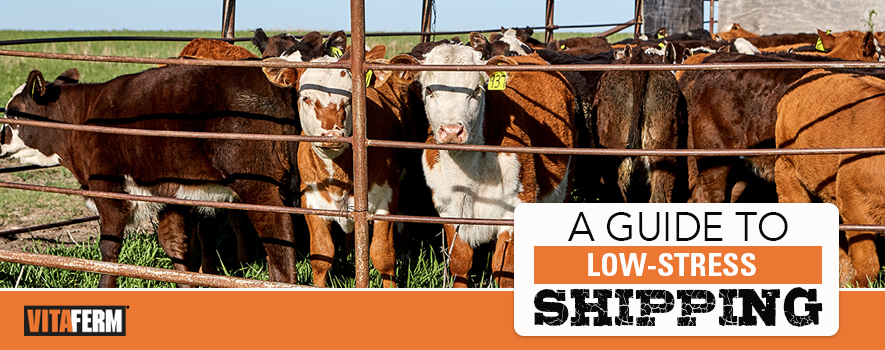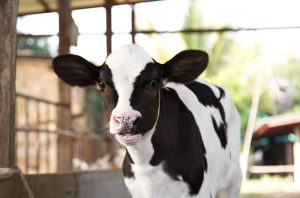The cool, crisp mornings are a hint that fall is just around the corner. And for cattle operations, that means one thing – shipping time is quickly approaching.
Shipping your cattle might seem like an easy task. Get them penned up, load them up and send them on their way. However, keeping your calves healthy and as low-stress as possible during this time of transition, takes some preparation and planning.
Generally, cattle will shrink 1% of their body weight per hour for the first few hours they are off feed and water and continue to shrink at a lower percentage of their weight as time continues. The first hours primarily consist of excretory shrink, followed by tissue shrink, a loss of moisture in the muscle.
Charly Cummings, a Yates Center, Kan., rancher and world-champion livestock auctioneer who calls sales and reps for Superior Livestock Auction, recommends keeping cattle as stress-free as possible prior to shipping, and that means keeping them in a routine as much as possible prior to loading the trucks. With cattle that are out on pasture he says it is best to keep them out there until the morning they ship.
“We keep our cattle out on pasture, bring them in that morning; keeping them in their natural climate keeps them less stressed,” Cummings said. “We do give them some practice runs 2-3 weeks prior to shipping. We get them used to coming into the same pen, same time to get them used to what is going to happen.”
While keeping them in their familiar environment does help with stress reduction, it also means the cattle are not shut off from forage or water. Cummings said that isn’t typically an issue, since the cattle lay down most of the night, and don’t really eat or drink much early in the morning before shipping.
“When we are shipping, that’s what’s fair to the buyer,” he said.
Another key to reducing stress is in using low-stress cattle handling practices. According to Cummings, once the cattle are in the corral, they are moved only by people and hand movements until they reach the alley way to the chute.
“We will sometimes use a hot shot in alleyway going up to the chute since they’re not used to being there. Sometimes the first one has to have a little encouragement, and then the rest will follow,” he said.
Shipping Weaned Calves
While the above low-stress handling practices can be applied to both yearlings and weaned calves, Cummings said that one thing to be aware of is making sure calves are weaned an adequate amount of time prior to shipping. He suggests making sure calves are weaned 45-60 days prior to weaning. This typically gives the calves enough time to get straightened out, getting them used to drinking and eating on their own.
Regardless if the calves are in pasture or in a dry lot where they are shipped from, Cummings said he would keep them in their familiar environment the night prior to shipping, and always ship early in the morning to help with loading and shrink.
Protect and Recover
In addition to reducing stress, there are ways to keep calves healthier prior to shipping. Health and nutrition are always of upmost concern. Taking precautionary steps, both prior to shipping and on arrival, can help keep shrink at a minimum while keeping calves healthier and gaining.
One way to be proactive with their nutrition is with the Vita Charge® line of products. In addition to shrink, the stress will typically cause calves to lose their appetite, which hinders their overall health and performance upon arrival to their new destination. To help them maintain their appetite, provide Vita Charge® Stress Tubs prior to shipping. The Stress Tub is a cooked tub for beef cattle that supports digestive health and promotes feed and water intake during times of stress and recovery. The tubs come in both 50-pound and 200-pound sizes and contain Amaferm®, a precision prebiotic designed to combat stress, which results in increased intake and nutrient digestion. They also contain MOS to trap bad bacteria limiting their ability to do harm, as well as organic trace minerals, vitamins and B vitamins.
Cummings, like many others, relies on the Vita Charge products upon receiving, to help give his cattle a boost.
“When I get in high risk calves and I don’t know their past; don’t know if they’ve drank out of water tank or have eaten hay out of the bunk, I use Vita Charge to give them a little charge,” he said.
Upon receiving calves, you might also consider administering the Vita Charge Cattle Drench, within the first 48 hours to jump start your cattle’s digestive system during stress. It is formulated to help cattle recover quickly and does not interfere with antibiotics. Then, you’d want to follow up with the Vita Charge Stress Tubs for at least two weeks before selecting the VitaFerm® Gain Smart® mineral option that is best for you.
Shipping time will soon be here, but it is never too soon to start making plans to ship your cattle the low-stress, healthy way. Make sure you have Vita Charge products on hand to help protect their digestive system and prepare them to move with the least stress possible.



